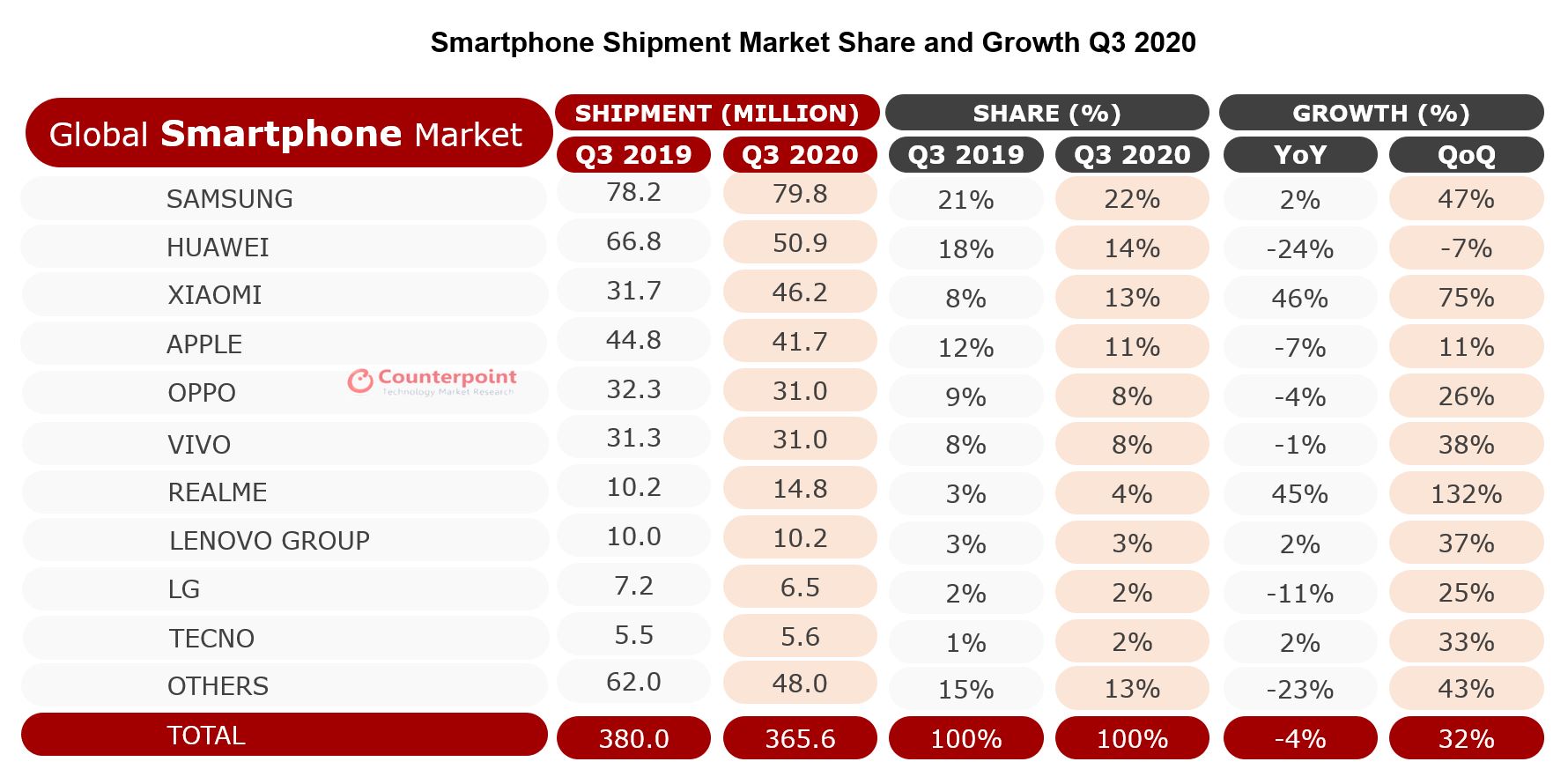In the third quarter of this year, the global smartphone market witnessed a decline of 4 percent year-on-year but grew 32 percent quarter-on-quarter with total shipments reaching 366 million units, reveals the latest research report from Counterpoint.
As per the report, recovering in the global smartphone market is mainly because of increased demands in key markets such as the United States, India, and Latin America. Also, several regions are slowing opening up after COVID-19 precaution measures taken by various countries, which also included total lockdown.

Samsung has kept its position as the leader of the smartphone market globally, enjoying a healthy market share of 22 percent as the company witnessed 2 percent YoY growth and 47 percent QoQ growth. It also managed to dethrone Xiaomi in the Indian market to become the leading smartphone brand.
China-based Huawei, which is facing several issues because of restrictions imposed by the United States, managed to become the second leading smartphone brand with a 14 percent market share in Q3 2020. However, the Chinese giant witnessed a significant 24 percent year-on-year decline and 7 percent QoQ decline in terms of shipments.
EDITOR’S PICK: Huawei leads the Chinese Smartphone Market in Q3 2020; 5G handsets accounted for over 50%
One interesting outcome is Xioami surpassing Apple for the third position with a 13 percent market share. It witnessed 46 percent and 75 percent YoY and QoQ growth respectively. Apple, on the other hand, held an 11 percent market share with a 7 percent YoY decline.
OPPO and Vivo took fourth and fifth positions with both the companies having 8 percent of the market share. OPPO-backed Realme emerged as the seventh leading smartphone brand globally with a four percent market share. But the company posted impressive growth — 45 percent YoY and 132 percent QoQ.
The report shows impressive growth from two brands — Xioami and Realme. This is mainly because of the increasing demand in key markets like China, India, Indonesia, the Philippines, and other Southeast Asian countries.
UP NEXT: Apple reportedly raises iPhone 12 orders by 2 million due to fierce demand







